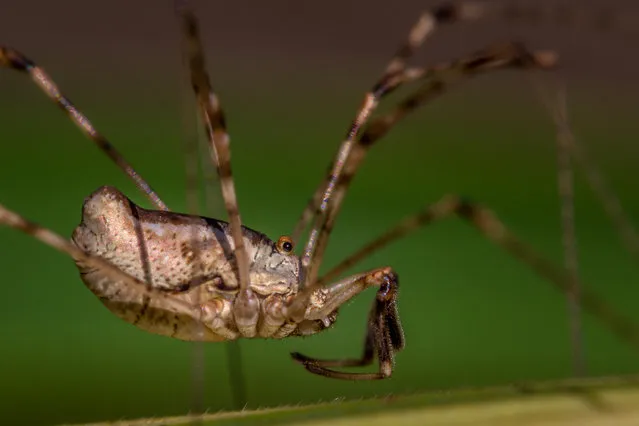
Close-up of a harvestman in Yorkshire, UK. Harvestmen are commonly mistaken for a spider – they have eight legs, two palps, and like spiders they are carnivorous, but the similarities end there. Harvestmen don’t spin webs and they aren’t venom producing. Spiders have two parts to their bodies but in the harvestmen, these two parts are fused together as one. (Photo by Rebecca Cole/Alamy Stock Photo)
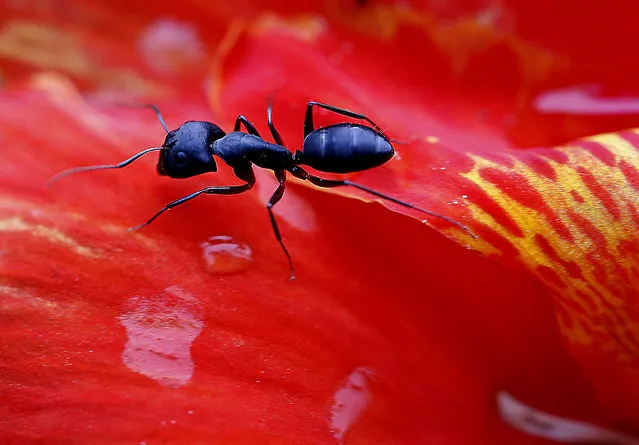
A black ant walks on a Canna Flower after a brief spell of rain in New Delhi, India, 03 July 2014. Indian meteorological department forecast constant rains in the next few days as monsoon finally hit the Indian national capital after a delay. (Photo by Harish Tyagi/EPA)
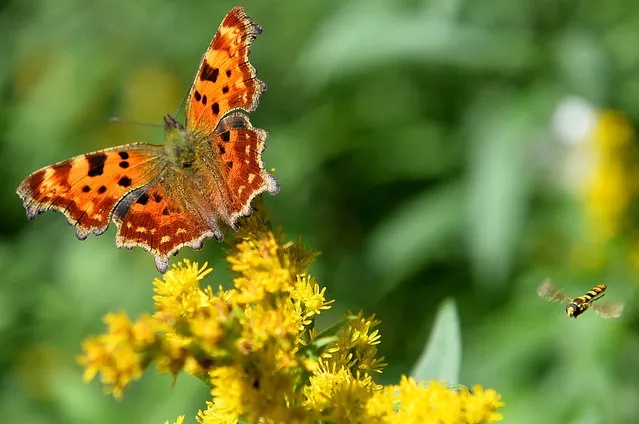
The Comma (Polygonia c-album) buttefly is perched on a flower as a wasp flies by on August 23, 2016 in Popielarze village, near Warsaw. (Photo by Janek Skarzynski/AFP Photo)
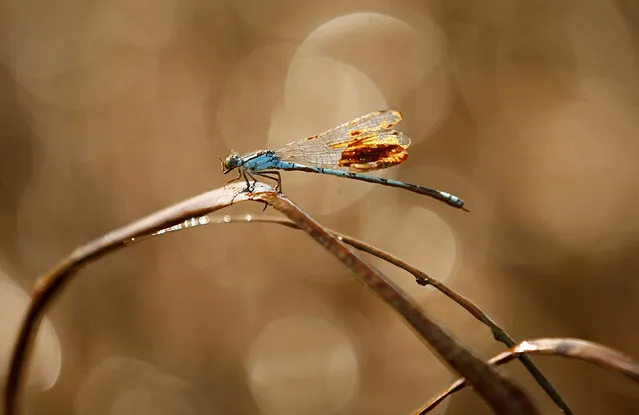
A dragonfly tries to clean itself as it is stuck to marsh grass covered in oil from the Deepwater Horizon oil spill, in Garden Island Bay on the Gulf Coast of Louisiana near Venice, Tuesday, May 18, 2010. (Photo by Gerald Herbert/AP Photo)
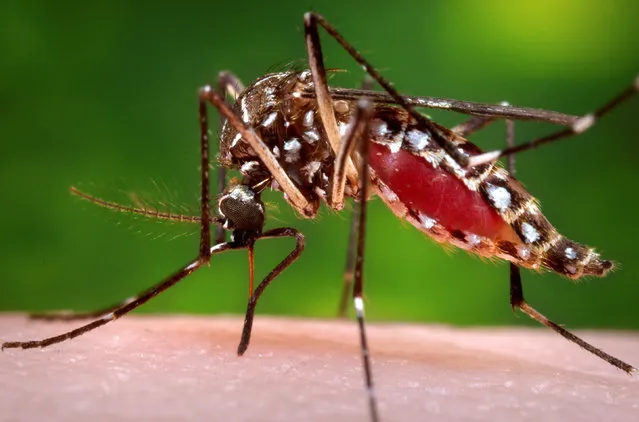
A female Aedes aegypti mosquito is shown in this 2006 Center for Disease Control (CDC) photograph released to Reuters on October 30, 2013. (Photo by James Gathany/Reuters/CDC)
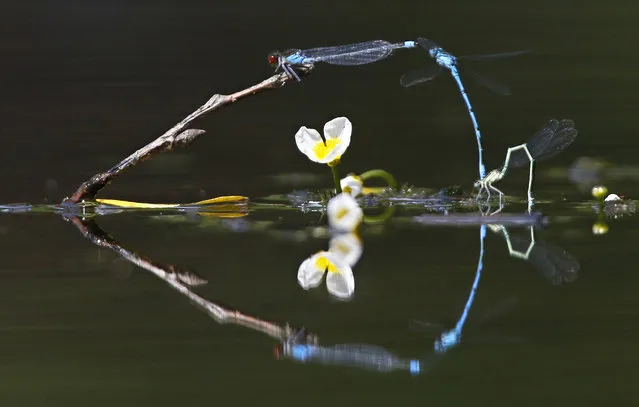
In this photo taken on Thursday, June 16, 2016, dragonflies fly above surface of a lake on a sunny day in the village of Viazynka, some 40 km (25 miles) northwest of Minsk, Belarus. (Photo by Sergei Grits/AP Photo)
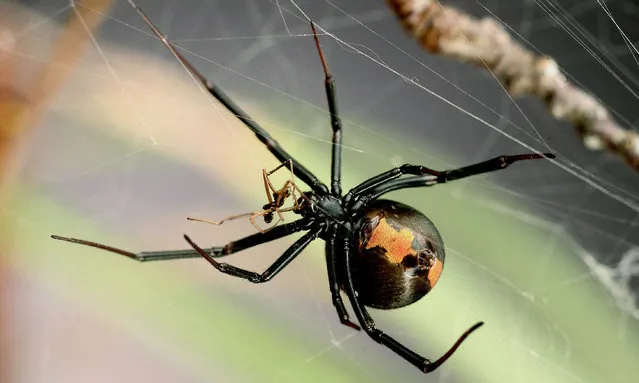
This undated handout picture made available by Professor Maydianne Andrade of the University of Toronto on September 20, 2016, shows an adult female Australian redback spider (Latrodectus hasselti) with dead a male near her mouthparts. Widow spider males, known for their tendency to end up as a post-coital snack, have developed a rather gruesome method of saving their own skins, scientists revealed on September 21, 2016. To avoid becoming the lunch of adult females, some males have taken to inseminating juveniles which have no external genitalia yet – penetrating right through their exoskeletons to deposit sperm. (Photo by Ken Jones/AFP Photo/Courtesy of Professor Maydianne Andrade of University of Toronto)
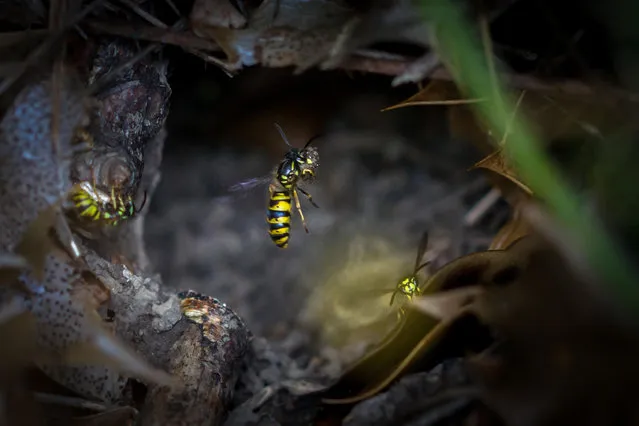
A common wasp carrying decaying wood in its jaws from this hole to its nesting site in Yorkshire. (Photo by Rebecca Cole/Alamy Stock Photo)
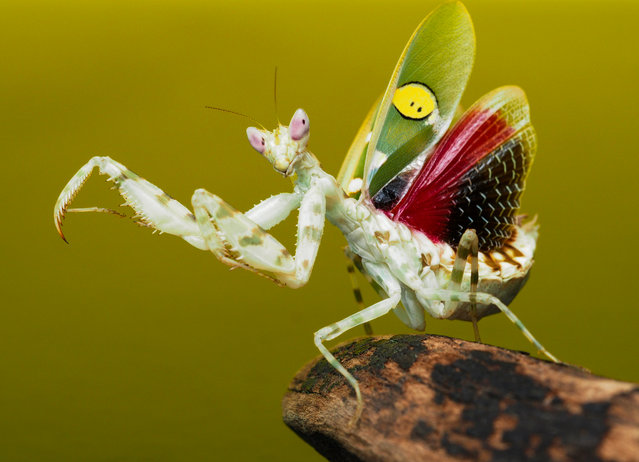
The jewelled flower mantis, commonly found in Asia, is believed to be the inspiration for many martial artists is seen in Jakarta, Indonesia on August 2, 2016. (Photo by Prabu Dennaga/Barcroft Images)
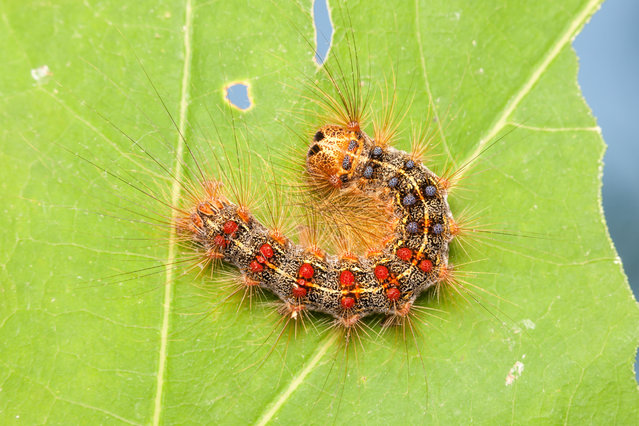
A Gypsy moth caterpillar perches on a partially eaten oak tree leaf, Bear Mountain State Park, Stony Point, US on June 20, 2016. (Photo by Clarence Holmes Wildlife/Alamy Stock Photo)

A spider crawls through the petals of a flower in Newark. (Photo by Icy Ho/Barcroft Images)
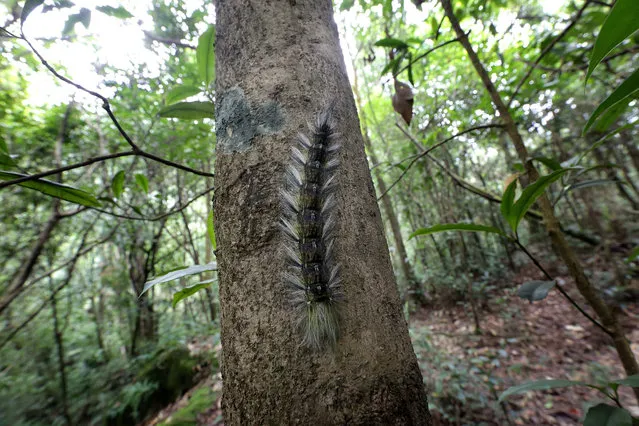
A picture made available on 16 September 2016 shows a Black hairy Caterpillar on a tree at the rain forest in the Cherrapunji, Meghalaya, India, 26 August 2016. Cherrapunji might have lost its title of the “wettest place on earth” to nearby Mawsynram by a few mm but it definitely retains its charms as a monsoon paradise with a quite a few titles to its name. Situated in the north eastern state of Meghalaya whose name itself means “abode of rain” Cherrapunjee is bursting at the seams with monsoon magic. (Photo by Harish Tyagi/EPA)
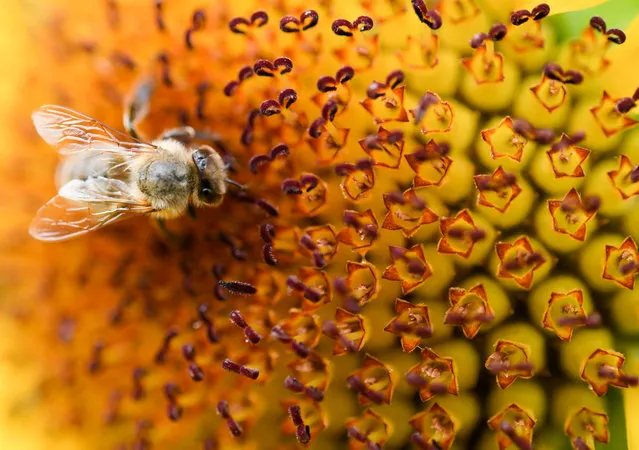
A bee is pictured on August 9, 2016 at a field in Maintal. (Photo by Arne Dedert/AFP Photo/DPA)
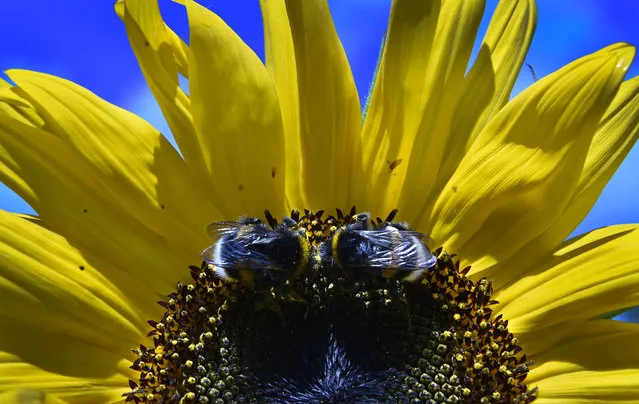
Two bumblebees collect pollen from a sunflower in a garden outside Moscow on August 16, 2016. (Photo by Yuri Kadobnov/AFP Photo)
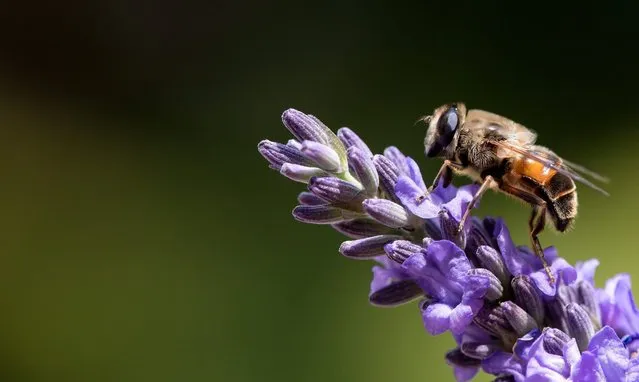
A bee rests on lavender in Munich, Germany, 27 June 2016. (Photo by Sven Hoppe/EPA)
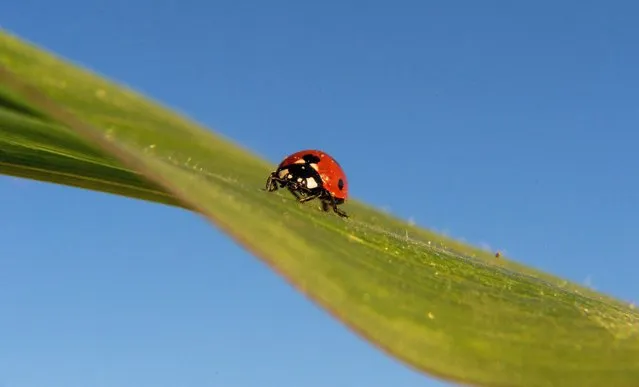
A ladybird sits on the leaf of a corn plant, and is illuminated by the rising sun at Visselhoevede (Niedersachsen), Germany, 20 July 2016. In the sky behind it, not even one cloud is seen. (Photo by Daniel Reinhardt/EPA)
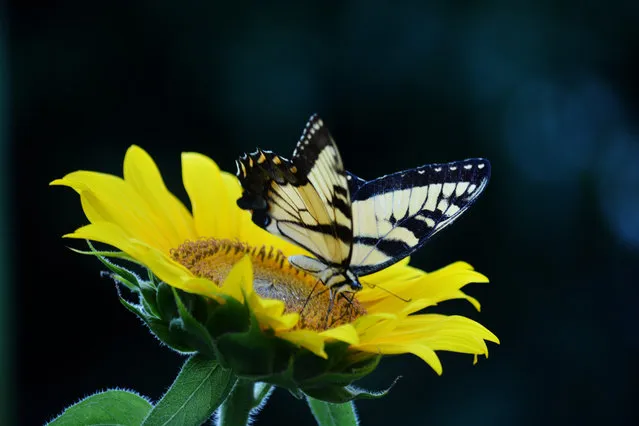
Diaa Bekheet takes this photo of a monarch butterfly snacking on a sunflower in his yard in Virginia on July 27. 2016. (Photo by Diaa Bekheet)
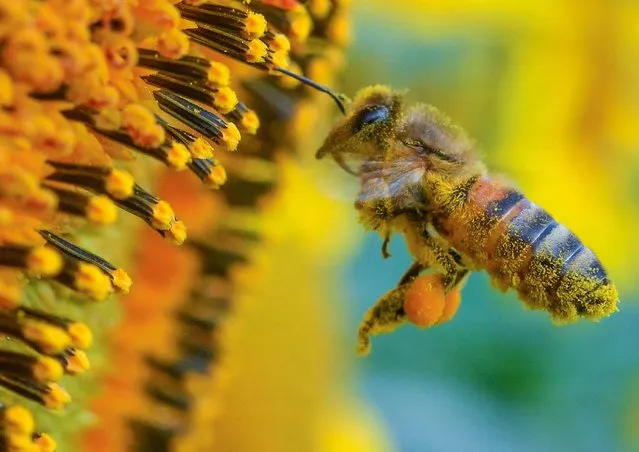
A bee collects pollen from a sunflower on July 5, 2016 on a field near Frankfurt an der Oder, eastern Germany. (Photo by Patrick Pleul/AFP Photo/DPA)
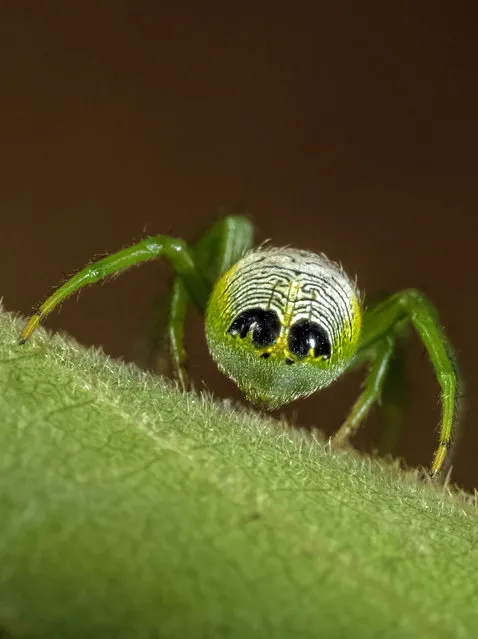
A spider with the face of an Alien on its back looks like a creature from another planet. The vibrant arachnid, a type of orb-weaver, is more commonly known as an Alien Butt Spider. Two eyes on the spiders back are used to confuse predators, who would expect them to be at the front. The spiders scientific name is Araneus praesignis – with praseginis being Latin for outstanding. (Photo by Caters News Agency)

In this photo provided by Geoffrey Williams, a drone honey bee emerges from a honeycomb. A new study out of the University of Bern in Switzerland found that the common insecticide neonicotinoid reduces the amount of live sperm in drone honey bees by 39 percent. Honey bee drones’ main job is to inseminate the queen and then they die. (Photo by Geoffrey Williams, University of Bern via AP Photo)
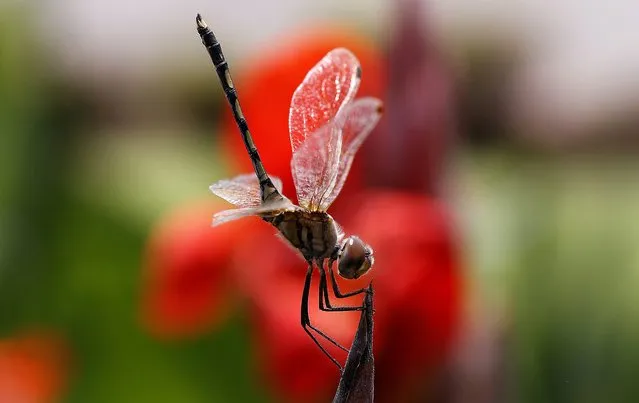
A Large White-faced Darter (Leucorrhinia pectoralis) rests on a flower in New Delhi, India, 15 May 2014. (Photo by Harish Tyagi/EPA)
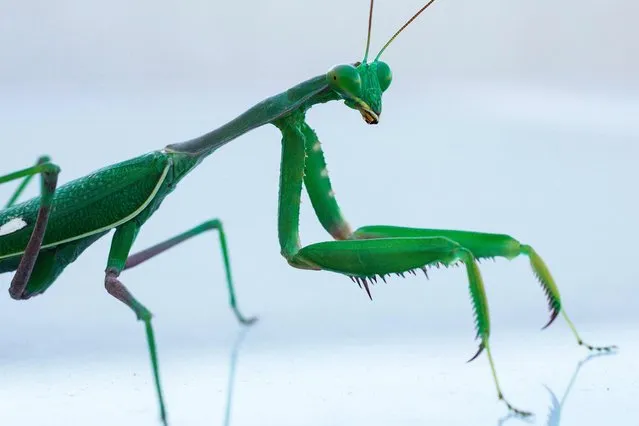
This file photo taken on November 12, 2015 shows a Mantis Religiosa, most commonly known as a Praying Mantis, on a table in the Israeli Mediterranean coastal city of Netanya on November 12, 2015. The Mantis Religiosa is an insect from the Mantidae family and it is one of the most well-known and widespread species of the order Mantodea, the Mantis. (Photo by Jack Guez/AFP Photo)
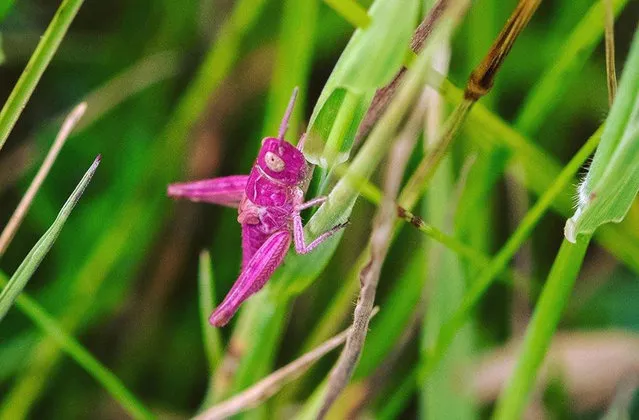
With its fuchsia-pink body and bright beady eyes, this pretty little grasshopper looks like shes hopped straight out of a Disney movie. But the little critter is actually a rare pink female grasshopper. Spotted in the Shropshire countryside, the glamorous bug looks she belongs in an exotic rainforest – but instead shes made Prees Heath Common Reserve, near Whitchurch, her home. The unique grasshopper was caught on camera by keen wildlife photographer John Harding July 22, 2016. (Photo by John Harding/Caters News)
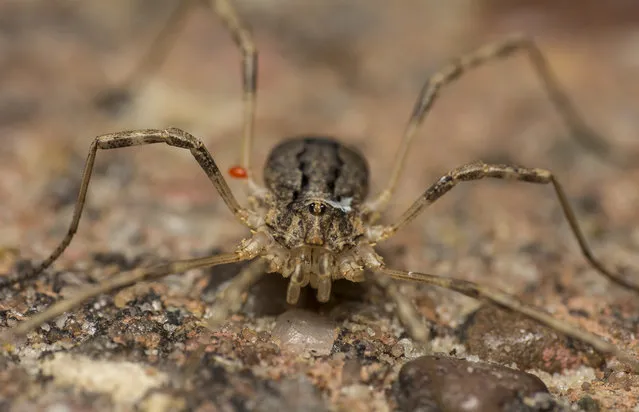
A harvestman spider pauses for a photo in Newark, England, on August 8, 2016. (Photo by Icy Ho/Barcroft Images)

A crab spider peeks up from between some rocks in Newark, England, on August 8, 2016. (Photo by Icy Ho/Barcroft Images)
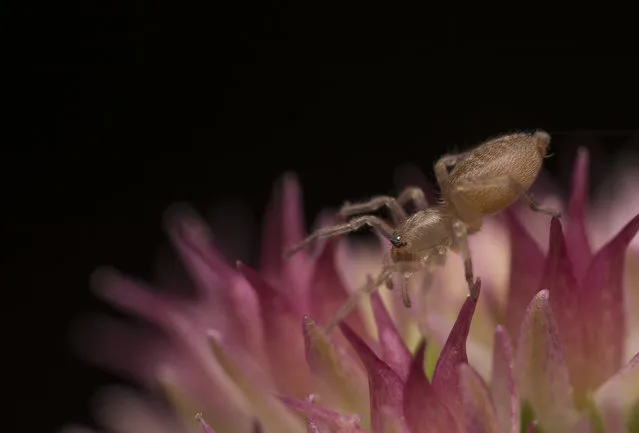
Drassodes cupreus crawls through the petals of a flower in Newark, England, on August 8, 2016. (Photo by Icy Ho/Barcroft Images)
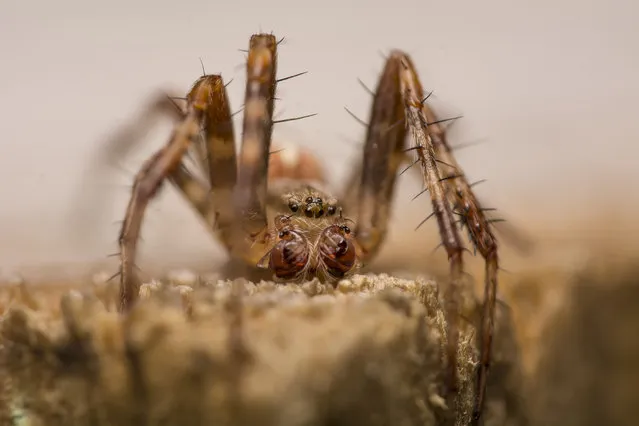
Icy captures a garden spider crawling through her garden in Newark, England, on August 8, 2016. (Photo by Icy Ho/Barcroft Images)
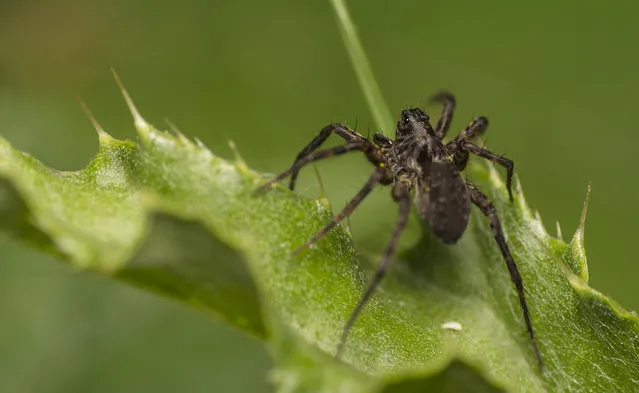
A wolf spider in garden in Newark, England, on August 8, 2016. (Photo by Icy Ho/Barcroft Images)
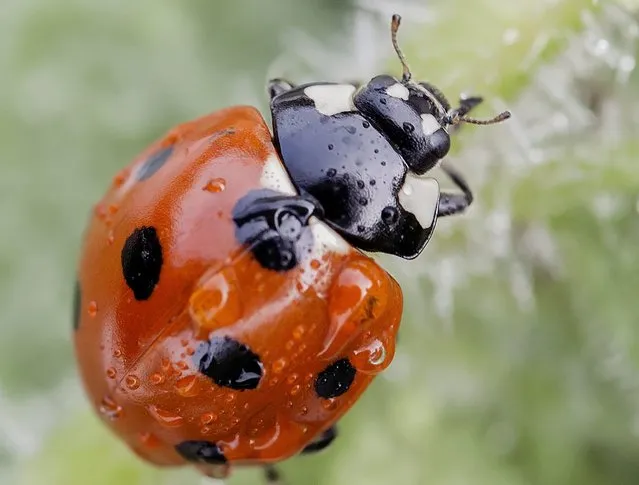
European Seven-spot Ladybird (coccinella Septempunctata). (Photo by: A&G Reporter/AGF/UIG via Getty Images)
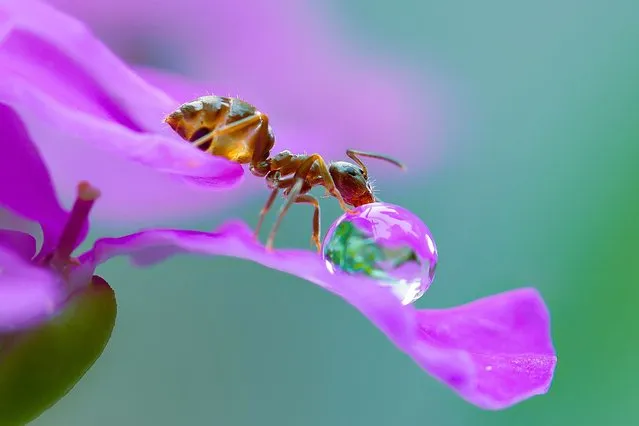
A macro view of an ant taking a sip from a water droplet on the edge of a flower in Obihiro, Japan. (Photo by Solent News and Photo Agency)
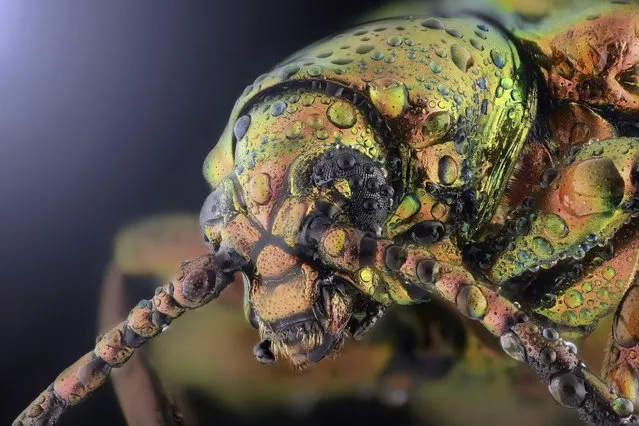
These spectacular creatures look like they have flown in from another planet – when actually they are regular insects including bees and beetles. (Photo by Yudy Sauw/Solent News & Photo Agency)
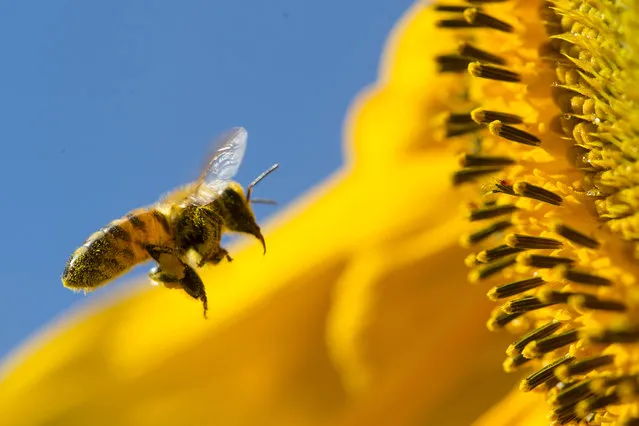
A honeybee forages on a sunflower growing in a pasture near Elkton in southwestern Oregon on July 25, 2016. (Photo by Robin Loznak/ZUMA Press/Splash News)
26 Sep 2016 06:52:00,
post received
0 comments
